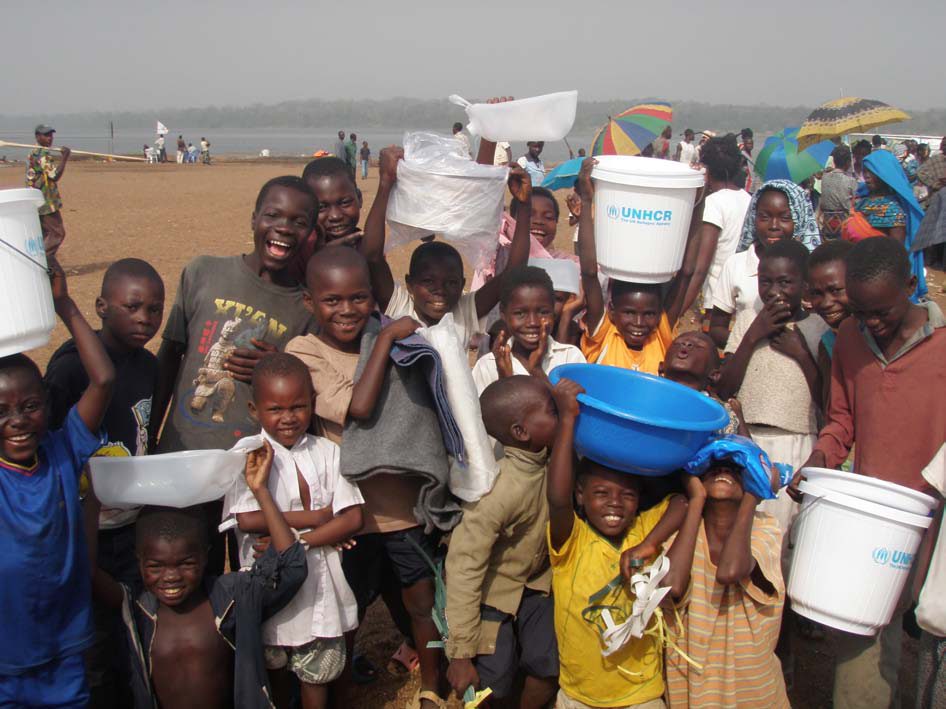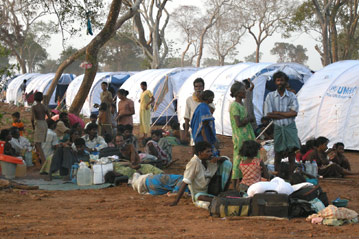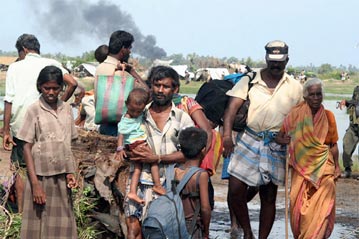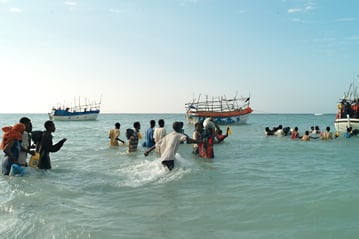Reaching out to Rwandan refugees in Congolese forest
Reaching out to Rwandan refugees in Congolese forest

GOMA, Democratic Republic of the Congo, March 14 (UNHCR) - Narimi Zaiman looks tired. She's just waded for hours through the dense Congolese jungle carrying her four-year-old daughter, and is now catching her breath on a wooden bench by the dirt track as she waits for the long ride home - to Rwanda.
Zaiman is among the tens of thousands of Rwandan refugees UNHCR believes are still living in the rainforest of eastern Democratic Republic of the Congo (DRC), more than 10 years after fleeing Rwanda.
"I fled Rwanda in 1994 with my mother. Our refugee camp was attacked in 1996, and we have been hiding in the forest ever since," says Zaiman. "Life is difficult in the forest and you don't know what is going on around you. We have been staying in a simple mud hut over the past eight years. To make a living, we work on the fields of Congolese farmers. When you are sick there is no doctor to help you."
Such stories of suffering are common among Rwandan refugees emerging from the Congolese jungle. Many are still traumatised by the experience of loss and years of struggling to survive in the forest. UNHCR only started to hear these testimonies when it set up 17 assembly points to reach out to Rwandan refugees living under difficult conditions in the forest who are hoping to return home. The first assembly points were set up as early as 1997, although UNHCR had to temporarily suspend its operations in the region soon afterwards.
"The repatriation process starts with community sensitisation in areas where we have learned that there are significant concentrations of Rwandan refugees," explains UNHCR repatriation officer Jaya Murthy. "Village communities are informed that any Rwandan refugee who wants to return home can come to one of UNHCR's assembly points."
Asked why she decided to return to Rwanda now, Zaiman says, "Since I received a letter from a family member in Rwanda saying that my mother had arrived back safely, I've wanted to return. But I didn't know how. Then one day in the market I heard about UNHCR's return programme, so I decided to walk to the assembly point in Kiliba with my daughter." Other returnees say they learned about the assembly points through the Radio Okapi programme about return to Rwanda.
Located in the North and South Kivu regions of eastern DRC, the assembly points follow the pattern of dispersed displacement. They have been established in deep forest and remote areas, some of them more than three hours' drive from Goma or Bukavu on tracks cutting through the tropical bush.
The refugees often arrive in appalling condition after walking long distances through the bush. UNHCR provides them with new clothing and meals, and treats diseases like parasites, skin infections and malaria. They stay for two or three days at the assembly point before being transferred to a transit centre close to the border with Rwanda, in either Bukavu or Goma. After screening and registration interviews - ex-combatants are referred to MONUC (UN Mission in Congo) and do not receive UNHCR assistance - the refugee agency helps them back to their areas of origin in Rwanda and provides further assistance to rebuild their lives at home.
Despite the instability in the DRC's Kivu region, the return programme is continuing. It helped some 9,000 refugees return to Rwanda last year, bringing the total number of UNHCR-assisted Rwandan returnees from the Kivus to more than 74,000 since 2000.
By Jens Hesemann in Goma, Democratic Republic of the Congo








